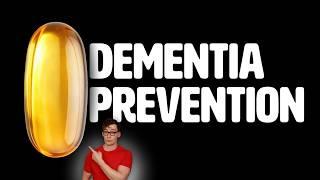#099 The Science of Exercise for Cancer | Kerry Courneya, PhD
Rhonda Patrick
Mar 3, 2025
Mindsip insights from this episode:
Engage in heavy compound-lift strength training for cancer prevention
If you only have 15 minutes a day, the single best use of that time is heavy, compound-lift strength training to build and maintain critical muscle mass.
Recognize exercise limitations in treatment side effects
While overwhelmingly beneficial, exercise is not a cure-all and in rare cases can exacerbate certain treatment side effects like skin irritation or diarrhea.
Utilize high-intensity interval training as monotherapy for low-grade cancers
In cases of low-grade cancers managed by 'active surveillance,' high-intensity interval training has been shown to lower cancer markers like PSA, positioning exercise as a potential monotherapy.
Exercise eliminates circulating tumor cells to prevent metastasis
The increased blood flow from exercise creates a 'shear stress' in the vasculature that can kill circulating tumor cells, potentially preventing metastasis.
Enhance chemotherapy effectiveness through exercise
Exercise improves the quality of blood vessels within tumors, which enhances the delivery of chemotherapy drugs and makes tumors more sensitive to radiation.
Exercise to combat cancer treatment fatigue
Counterintuitively, patients who exercise during chemotherapy report less fatigue than those who rest, demonstrating that rest is not always the best medicine.
Prioritize resistance training to maintain muscle mass for cancer survival
Low muscle mass is a critical factor driving the risk of recurrence and death from cancer, making resistance training essential.
Utilize exercise as prehabilitation for chronic disease management
Exercising throughout your life acts as prehabilitation, preparing your body to better handle the eventual diagnosis and treatment of a chronic disease like cancer.
Aim for 300 minutes of exercise weekly for optimal health benefits
The 150-minute weekly exercise guideline is the minimum for benefits, with further risk reduction seen up to 300 minutes, which should be the goal for those at higher risk.
Exercise to reduce cancer risk regardless of weight or history
Exercise can lower cancer risk even if you are obese, have a family history, or are a smoker, working independently of other major risk factors.
More from
Rhonda Patrick
#104 Dr. Ben Bikman: How To Reverse Insulin Resistance Through Diet, Exercise, & Sleep
#103 A Deep Dive on Using Coffee For Health & Longevity (Full Guide & Research)
#102 Why Vitamin D Deficiency Accelerates Brain Aging
#101 Dr. Andy Galpin: The Optimal Diet, Supplement, & Recovery Protocol for Peak Performance
#100 The Optimal Creatine Protocol for Strength, Brain, and Longevity | Darren Candow, PhD
You also might be interested in
One Fat Can Prevent Dementia — If You Eat It Long-term
Thyroid function and hypothyroidism: why current diagnosis and treatment fall short for many, and how new approaches are transforming care | Antonio Bianco, M.D., Ph.D.
This Is Why Soda Spreads Cancer in your Body
Starving Cancer: The Hidden Power of Food, Fasting, and the Body’s Inner Terrain
Dementia Rates PLUNGED in Study of 1 Million People














